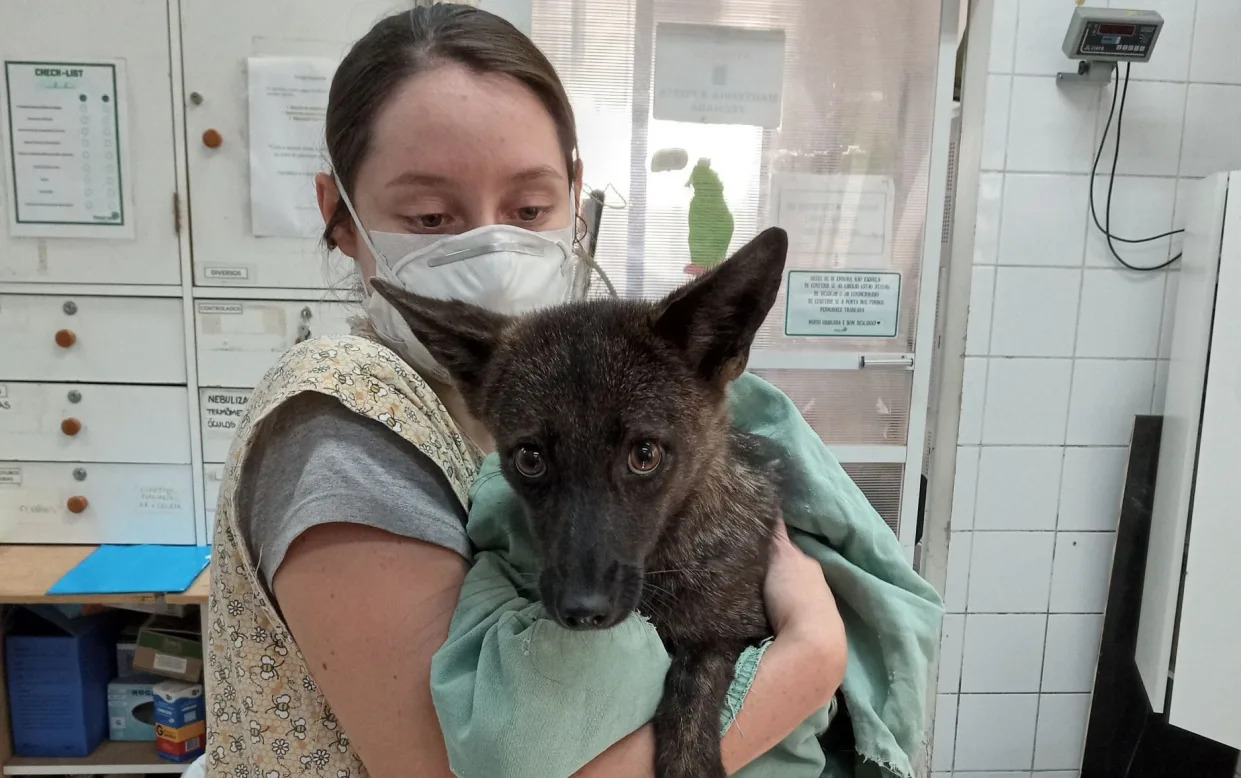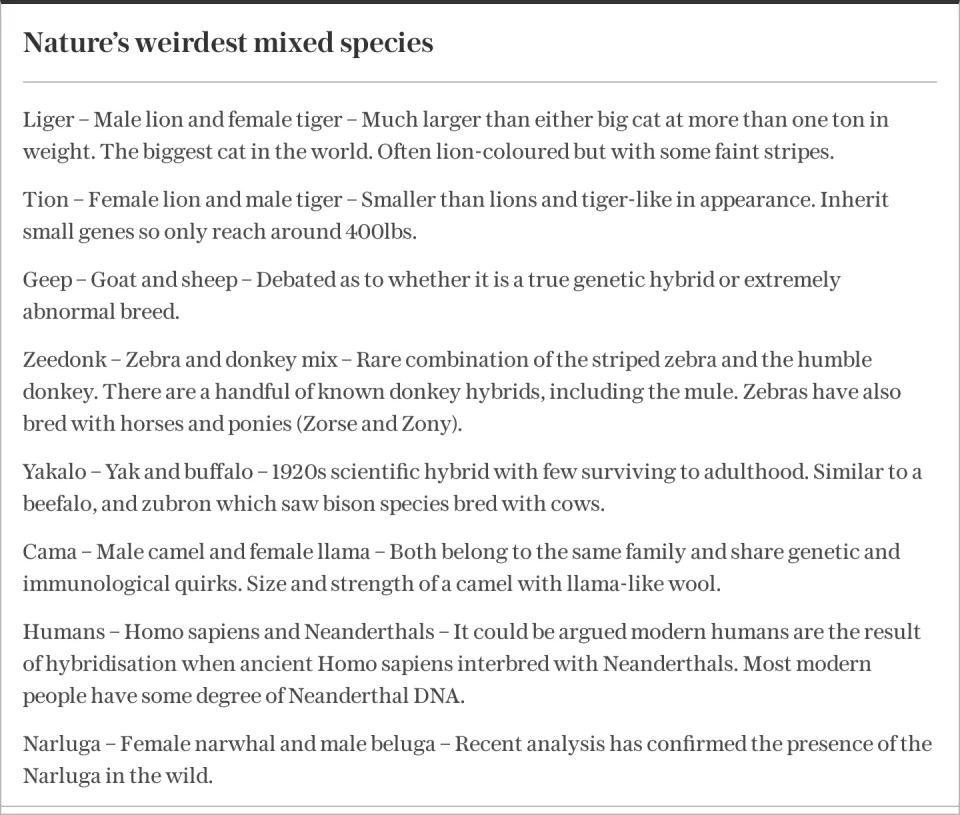
I have two of these wonderful dogs called Schipperke's, Trooper and Tami. Both are Show Dogs. They are sometimes called 'the little captain' as the name is often mistranslated into Skipper Key, as in boat skipper. The legend has it they are Flemish or Belgian Barge Dogs.
The reality is somewhat different. They look like small version of the Belgium Sheep Dog though they are not directly related, and they too are a sheep dog.
The Schipperke (pronounced: skipper-key) has been known for centuries in the Flemish Province of Belgium where he was bred as a watchdog and hunter of vermin.
He is a bright, active and inquisitive dog that makes an excellent family companion. He is very good with children and suspicious of strangers, making him a good watchdog. Smart, loyal and loving, the Schip needs attention and companionship. He is active and loves to learn, and will excel in such activities as obedience, agility, flyball, tracking and herding.
Peasants in the Flemish Low Countries were not allowed large dogs, like horses and swords these were the symbols of the ruling classes and their Knights. So the peasants bred a small dog called the Schipperke to act as a shepherd, and the name means shepherd in Flemish. The peasants were Flemish Weavers and they brought their dogs with them when they traded with England and Europe.
THE WEE DOG FROM WALES
By Sharon Pflaumer
As with most breeds, there are a number of theories concerning
the origins of the Pembroke Welsh Corgi in addition to the
fanciful tale (about the fairies leaving two children wee dogs
as a gift). This sturdy, all-around worker may have come
from Schipperke-like dogs introduced to the British Isles
by Flemish weavers in 1107. These weavers settled in Wales,
where their canine companions evolved into cattle dogs.
Another theory maintains the Pembroke is descended from
the Swedish Vallhund, which may have been introduced to
Wales by the Vikings.
Sumptuary Laws of Edward III's Reign
In 1337 when war was again declared with France, the English Parliament enacted
a law intended to restrain extravagance in dress and to promote the consumption
of English manufacturers. The 1337 act dealt with furs, limiting the wearing therof
to persons of gentle birth (or persons with annula incomes of 100 pounds or more).
The Black Death reached England in 1348 and the end of the following year had spread
to the north of the country. It was estimated at least 20% of the population died.
This led to the imposition in 1351 of the Statute of Labourers which fixed wages to
pre Black Death levels and prevented mobility of labour in an attempt to restore stability
at a timewhen demand for workers was much greater than the supply (Pearsall, 1996).
People were often paid in apparel and foodstuffs. In 1355 an act was passed concerning the
dress of prostitutes. This related to restrictions of wear with the purpose of
distinguishing prostitutes from respectable women. The parliament of 1363 passed an
act regulating both apparel and consumption of foodstuffs. This act amended the 1337
act and reduced the threshold for permissible wearing of furs to any non-peasant
with annual income of 40 shillings or greater. The legislation had two objectives
i.e.. protectionism i.e. only members of the royal family could wear cloth of
non-English manufacture and partly as an anti-inflationary measure. Prior to this,
Flemish weavers were taking English cash out of the country, restriction to the
royals, was an economic means of keeping English money in the country.
The Schipperke look more like foxes when they are mature, and like little bears when they are young pups. They are bright, intelligent, and obstinate hence the designation Little Captain, they push their way around. They are the perfect anarchist dog and the perfect dog for an anarchist.
They were later adopted by the Flemish Tailors Guild sometime in the late 15th Century or early 16th Century, because of their beautiful ruffs. The Tailors would make decorated collars and show them off on the ruffs of their Schipperke's in local competitions, walking them through the streets, and thus the origin of the dog show begins with the Flemish Tailors and their Schipperke's.
uring the 15th Century, Brussels became the tapestry capital. The extravagant use of gold thread in these works, inspired the name Tapis D'Or (cloth of gold). The most prominent weaver, Pieter Van Aelst, was responsible for creating "The Acts of the Apostles" which was commissioned for the Sistine Chapel. And in the 1500's Queen Elizabeth made the weaving industry the basis of England's trade. William Sheldon designed a series of county maps which were a charming mixture of geographical representation and decorative design. Mary, Queen of Scots, employed 2 Master Embroiderers for the Crown: Pierre Oudray and Charles Howart. The first embroidery book published in England was "A Schole House for the Needle" by Richard Schorleyker in 1624. It illustrated most of the usual motifs of the time, and also some lace and cut work. Embroiderers were also influenced by the designs from a manuscript by Thomas Trevellyan. These may be seen in many variations of Elizabethan Age embroidery.
They were later adapted for use on the Flemish canal barges, as a rat dog, to hunt and kill the scourge of barges and the working class ghetto. Thus the confusion about them being barge or boat dogs and the terms Skipper Keys, or little captains.
My Year of the War Including an Account of Experiences with the Troops
in France and the Record of a Visit to the Grand Fleet Which is Here
Given for the First Time in its Complete Form
When I think of Belgium's part in the war I always think of the little
Belgian dog, the schipperke who lives on the canal boats. He is a
home-staying dog, loyal, affectionate, domestic, who never goes out
on the tow-path to pick quarrels with other dogs; but let anything on
two or four feet try to go on board when his master is away and he will
fight with every ounce of strength in him.
They are a rare dog breed that has become popular over the last few years. Since we adopted Trooper and Tami, I see more of them around the neighbourhood now. But folks still stop us and ask us what kind of dog they are. Most folks have heard of them as the rare Belgium Barge dog.
 Both our dogs are from Diana Kinnear's Majekin line of Schipperke's and we are their adopted guardians. They both still do dog shows and Trooper is a Champion breed stud. This photo is of his winning pose in Camrose, the year we adopted him.
Both our dogs are from Diana Kinnear's Majekin line of Schipperke's and we are their adopted guardians. They both still do dog shows and Trooper is a Champion breed stud. This photo is of his winning pose in Camrose, the year we adopted him.We found them by looking on the net. We had used the net to find rescue animals, in particular cats, we have a long standing tradition of adopting older cats. Since we lived in an apartment for many years. When we moved into our house I began to suggest we get a dog. A small dog, this funny dog with a funny name, we had seen at the dog show, which was just a bit bigger than our cats.
So we were looking for the dog with the funny name Schipperke and looked it up on the Internet. We came across Trooper through Diana who had moved from Calgary to Edmonton and needed to adopt him out to a home since she had another male in her menagerie and Trooper being the Alpha Male he needed a home of his own.
And eventually so did his granddaughter Tami, who really is a a spoiled little princess. She is my partners little girl. She lived with other Julie and the other 'girls' at Diana's house but really needed to be in her own home. And yes it is her home, she bosses Trooper around.
So what started out as a us looking at getting one dog, ended up with us adopting two of these wily intelligent guard dogs. And let me tell you they are better than any alarm system when it comes to protecting 'their home and property'.

| Julie at 10 weeks(Mazeru Heavensent to Majekin) bred by Anna Verleg |
| ( Ch Majekin Poetry In Motion x Ch Roetmop Qiwi) |
| Tami at 4 months(Majekin Talk About Me) |
| (Ch. Ebonorth Autumn Stormy Boy x Ch Majekin Ombrelle de Orval) |
SCHIPPERKE CLUB OF CANADA SPECIALTY WINNER:
AM/CAN CH MAJEKIN NEMESIS DE SANGBLEU (TROOPER)

Now what prompted me to write about them, which I had been intending on doing for some time actually, was this recent story in the news. If you are a regular reader of this blog, and of course who isn't, you know my position on crimes against animals.
Well this story was in the press recently. It's a terrible case of animal abuse and cruelty and it happened to a Schipperke puppy and it is horrible because the puppy was in the care of this person, totally dependent on them for it's survival. And of course as I have pointed out before if a person can do this to an animal they can do the same to children or even adults.
And well he should. But he also needs medical help for his mental condition, which no amount of jail time will address. And it shows the failure of our social system that does not consider mental health as a public health issue. Instead it allows people to suffer alone, as the Klein government did when it closed Alberta Hospital and left the mentally ill to wander the streets homeless. And thus contributes directly to their alienation and subsequent mental illness which they deny they have.Three months for puppy drowning
Karen Kleiss, edmontonjournal.com
Published: Friday, November 16EDMONTON - A man who drowned his friend's four-month-old puppy in a bathtub while she listened on the phone was sentenced today to three months in jail.
Jeffrey Vince, 46, is banned from owning pets for two years after his release, Crown prosecutor Prima Michell said after court.
Vince pleaded guilty in June to causing pain and suffering to an animal in connection with the Sept. 6, 2006 incident.
Michell said the incident began when Vince and a female friend got into an argument because the woman had been discussing Vince's mental health with a neighbour.Vince pointed at the four-month-old puppy, a Schipperke lap dog named Shadoe, and the tiny dog nipped at his fingers. Angry, he grabbed the animal, shoved it into a carrier and drove home to his apartment, Michell said.
A short time later, he called his friend and asked her if she wanted to hear her dog dying. He placed the dog in the carrier in the tub, and ran the water until it died. He then attempted suicide by overdosing on pills, Michell said.
"This is not a case of somebody who might have some weird notions of discipline, and it is not a case of someone who is too poor to feed their pet," Michell said. "This is a deliberate act by someone who is mad at the owner."
Michell said psychological reports entered into evidence during the trial show Vince has a history of mental illness, but that the illness did not prevent him from forming the intention to kill the animal.
In court today, Michell said told the judge he feels bad for killing the dog.
On the other hand here is a story about how important that bond is between us and our animal companions, and no they are NOT pets. It is a bond that is as deep as humankind, since we domesticated wild animals to join us in our communities. And it too is a sad story, because it deals with the death of family member.
Posted Tuesday, October 30, 2007, at 3:37 PM
I'm just popping in for a quick minute today. My wonderful, sweet Schipperke, Bear, passed away suddenly and quite unexpectedly yesterday morning. He didn't feel well on Sunday. We just thought his arthritis was bothering him. By 3:00 a.m. yesterday morning, we knew something was seriously wrong. We flew out the door for Dr. K's office, where he was waiting for us. We were all with him, when he crossed the bridge. Dr. K feels that it probably was a blood clot brought on either by an auto immune response or a disease called DIC. He assured us, that there was nothing that we could have done.
Bear was such a bright light in my house. I know that it will be dim for a while, and never quite as bright before. Bear was a friend to everyone who met him, whether it was another pet or person. He became the official greeter of my neighborhood. We made rounds to visit all of the neighbors. He hadn't been getting out quite as much, because of his arthritis, but he still liked to visit.
Casey and I are still in quite a bit of shock. I may not be around for a couple of days, and I hope that you all understand. I'm still processing. This was an exceptionally hard blow, so soon after losing Slate the first of September. Please send good thoughts and prayers this way.
Goodbye Bear. You were a loyal, uplifting friend. You will be terribly missed.
But I will end on a more positive note with this final post I came across while Googling Schipperke's in the news. I have two cats and two dogs, and they all get along well. I will tell you my cat tales in another post. This final post ends with a message about the importance of adopting animals, especially rescued animals, those that have been abandoned by their owners. Often through no fault of their own, because in Alberta with the lack of affordable housing landlords are refusing to accept 'pets' or overcharging for the privilege of living with your companion animal.
Juanita's Juanderings
Claws and Paws
I have two cats, Ebony and Ivory, who are about five years old, and who have become fat, lazy, and quite comfortable in their surroundings. In other words, quite spoiled. Until recently they have been able to lounge anywhere they darn well choose to lounge, be it on the furniture, my bed, or the dining room table. Now there is a battle for �top dog� in the house, and the cats seem to be losing the war. So much so that I haven�t seen much of them in the last two weeks. I think they have taken permanent lodging underneath my bed.
Their calm, cool, complacency has been greatly upset by my bringing home another four-legged fur ball � namely Roxie, a three-year-old Schipperke. Now to picture this. Here�s Roxie, all of seven pounds, and both of the cats are at least 12 to 14 pounds each. You see, Roxie doesn�t much like cats, and my cats don�t much care for dogs as it turns out. I am hoping that things will eventually settle down to a dull roar instead of the growl, bark, chase, and hide routine that now takes place every time the cats appear.
But, have no fear. I have not abandoned the cats. I go into the bedroom every day, shut the door, and spend quality time with them. I don�t want them to feel unloved. In fact, I moved their food into the master bathroom so they would not have to traverse the dog�s line of sight in order to be able to eat. But, they still must do that to get to their litter boxes.
At this time of year, with Christmas rapidly approaching, if you are considering a pet for your family, please consider adopting from the Humane Society as I did. There are plenty of beautiful, loving dogs and cats, puppies and kittens that deserve good, loving homes. But, if you do adopt a pet, please make sure your family is properly educated in the proper care and training of that animal before you bring it home. And, if you decide to get a pet from a private party, please make certain that your pet is properly vaccinated and spayed or neutered at the proper age. It is better for the animal and it avoids the unnecessary euthanizing of unwanted puppies and kittens.
'Til next time, be safe and have a very Happy Thanksgiving.
Find blog posts, photos, events and more off-site about:
animal abuse dog shows, Belgium barge dog, animals, Flemish, little captain, cats,Edmonton, animals, dog killers, dogs, pets,
mental illness, Belgium, dogs, animal abuse, schipperke, humans, domestication,








